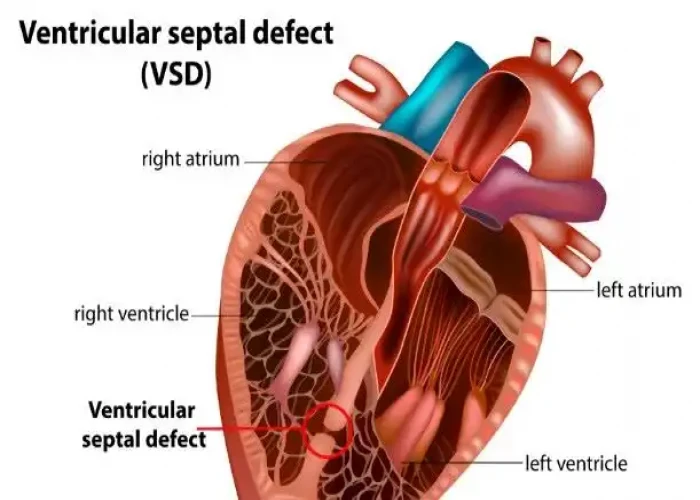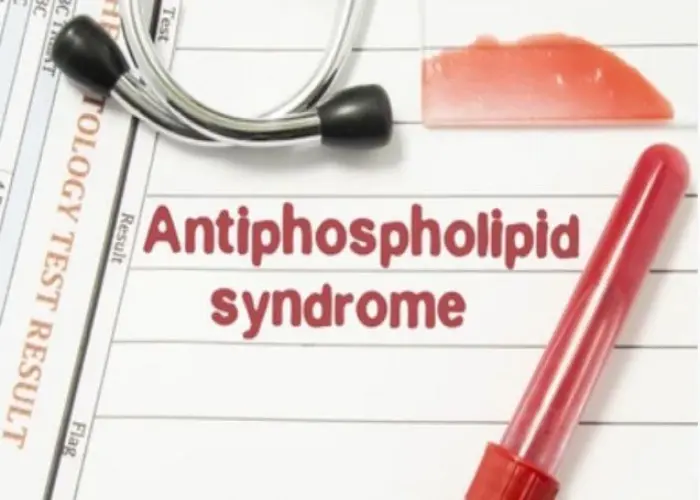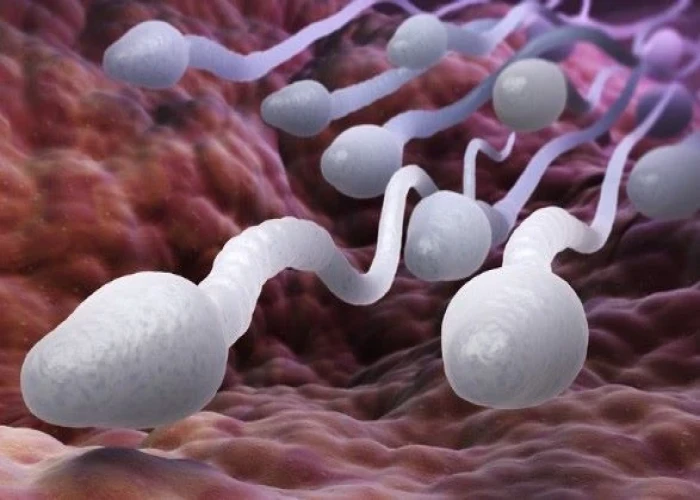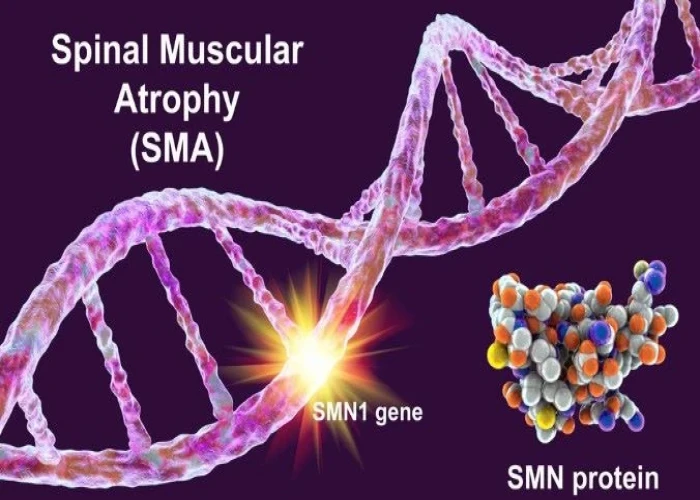 Welcome
Welcome
“May all be happy, may all be healed, may all be at peace and may no one ever suffer."
Ventricular septal defect (VSD)

Ventricular septal defect (VSD) is a congenital heart defect in which there is an abnormal opening or hole in the wall that separates the heart's lower chambers (ventricles). This can cause oxygen-rich blood to mix with oxygen-poor blood and lead to various complications, such as heart failure and pulmonary hypertension.
VSD is one of the most common congenital heart defects, and it can occur in isolation or as part of a more complex heart defect. In many cases, VSDs are detected in infancy or childhood, but they can also be diagnosed later in life.
The symptoms of VSD can vary depending on the size and location of the defect. In some cases, VSD may cause no symptoms, and the condition may resolve on its own. However, in more severe cases, symptoms can include difficulty breathing, rapid breathing, poor feeding, failure to thrive, and fatigue.
The diagnosis of VSD is typically made through a physical exam, electrocardiogram (ECG), chest X-ray, and echocardiogram, which uses sound waves to create images of the heart.
Treatment for VSD may depend on the size and location of the defect, as well as the age and overall health of the patient. In many cases, small VSDs may close on their own without the need for treatment. In more severe cases, medications may be used to manage symptoms or surgery may be necessary to close the defect.
With appropriate treatment, most people with VSD can lead normal, healthy lives. However, ongoing medical follow-up may be necessary to monitor for any potential complications or long-term effects.
Research Papers
Disease Signs and Symptoms
- Shortness of breath (dyspnea)
- Irregular heartbeats (arrhythmia)
- Fatigue (Tiredness)
- Weakness
Disease Causes
Ventricular septal defect (VSD)
Congenital heart defects arise from problems early in the heart's development, but there's often no clear cause. Genetics and environmental factors may play a role. VSDs can occur alone or with other congenital heart defects.
During fetal development, a ventricular septal defect occurs when the muscular wall separating the heart into left and right sides (septum) fails to form fully between the lower chambers of the heart (ventricles).
Normally, the right side of the heart pumps blood to the lungs to get oxygen; the left side pumps the oxygen-rich blood to the rest of the body. A VSD allows oxygenated blood to mix with deoxygenated blood, causing increased blood pressure and increased blood flow in the lung arteries. This results in increased work for the heart and lungs.
VSDs may be various sizes, and they can be present in several locations in the wall between the ventricles. There may be one or more VSD.
It's also possible to acquire a VSD later in life, usually after a heart attack or as a complication following certain heart procedures.
Disease Prevents
Ventricular septal defect (VSD)
In most cases, you can't do anything to prevent having a baby with a ventricular septal defect. However, it's important to do everything possible to have a healthy pregnancy. Here are the basics:
- Get early prenatal care, even before you're pregnant. Talk to your doctor before you get pregnant about your health and discuss any lifestyle changes that your doctor may recommend for a healthy pregnancy. Also, be sure you talk to your doctor about any medications you're taking.
- Eat a balanced diet. Include a vitamin supplement that contains folic acid.
- Exercise regularly. Work with your doctor to develop an exercise plan that's right for you.
- Avoid risks. These include harmful substances such as alcohol, tobacco and illegal drugs.
- Avoid infections. Be sure you're up to date on all of your vaccinations before becoming pregnant. Certain types of infections can be harmful to a developing fetus.
- Keep diabetes under control. If you have diabetes, work with your doctor to be sure it's well controlled before getting pregnant.
If you have a family history of heart defects or other genetic disorders, consider talking with a genetic counselor before getting pregnant.
Disease Treatments
Many babies born with a small ventricular septal defect (VSD) won't need surgery to close the hole. After birth, your doctor may want to observe your baby and treat symptoms while waiting to see if the defect closes on its own.
Babies who need surgical repair often have the procedure in their first year. Children and adults who have a medium or large ventricular septal defect or one that's causing significant symptoms may need surgery to close the defect.
Some smaller ventricular septal defects are closed surgically to prevent complications related to their locations, such as damage to heart valves. Many people with small VSDs have productive lives with few related problems.
Babies who have large VSDs or who tire easily during feeding may need extra nutrition to help them grow. Some babies may require medication to help treat heart failure.
Medications
Medications for ventricular septal defect depend on the severity of heart failure symptoms. The goal of medication is to decrease the amount of fluid in circulation and in the lungs. Medications called diuretics, such as furosemide (Lasix), reduce how much blood must be pumped.
Surgeries or other procedures
Surgical treatment for ventricular septal defect involves plugging or patching the abnormal opening between the ventricles. If you or your child is having surgery to repair a ventricular defect, consider having surgery performed by surgeons and cardiologists with training and expertise in conducting these procedures.
Procedures to treat VSD may include:
- Surgical repair. This procedure of choice in most cases usually involves open-heart surgery under general anesthesia. The surgery requires a heart-lung machine and an incision in the chest. The doctor uses a patch or stitches to close the hole.
- Catheter procedure. Closing a ventricular septal defect during catheterization doesn't require opening the chest. Rather, the doctor inserts a thin tube (catheter) into a blood vessel in the groin and guides it to the heart. The doctor then uses a specially sized mesh device to close the hole.
After repair, your doctor will schedule regular medical follow-up to ensure that the ventricular septal defect remains closed and to look for signs of complications. Depending on the size of the defect and the presence of other problems, your doctor will tell you how frequently you or your child will need to be seen.
Disease Diagnoses
Disease Allopathic Generics
Disease Ayurvedic Generics
Disease Homeopathic Generics
Disease yoga
Ventricular septal defect (VSD) and Learn More about Diseases

Elevated blood pressure

Antiphospholipid syndrome

Heart murmurs

Seizures

Subarachnoid hemorrhage

Post-vasectomy pain syndrome

Multiple system atrophy (MSA)

Hypereosinophilic syndrome
Ventricular septal defect, vsd, ভেন্ট্রিকুলার সেপ্টাল ডিফেক্ট, ভিএসডি
To be happy, beautiful, healthy, wealthy, hale and long-lived stay with DM3S.
